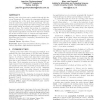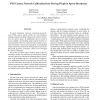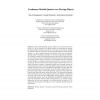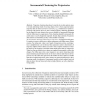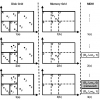70 search results - page 7 / 14 » Similarity Search in Moving Object Trajectories |
GIS
2006
ACM
14 years 8 months ago
2006
ACM
Moving point object data can be analyzed through the discovery of patterns. We consider the computational efficiency of computing two of the most basic spatio-temporal patterns in...
WACV
2012
IEEE
12 years 3 months ago
2012
IEEE
In sports broadcasts, networks consisting of pan-tiltzoom (PTZ) cameras usually exhibit very wide baselines, making standard matching techniques for camera calibration very hard t...
SSD
2007
Springer
14 years 1 months ago
2007
Springer
In the k-medoid problem, given a dataset P, we are asked to choose k points in P as the medoids. The optimal medoid set minimizes the average Euclidean distance between the points ...
DASFAA
2010
IEEE
14 years 2 months ago
2010
IEEE
Trajectory clustering has played a crucial role in data analysis since it reveals underlying trends of moving objects. Due to their sequential nature, trajectory data are often rec...
Publication
Indexing moving objects is a fundamental issue in spatiotemporal databases. In this paper, we propose an adaptive Lazy-Update Grid-based index (LUGrid, for short) that minimizes th...
